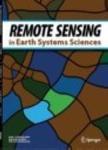版权所有:内蒙古大学图书馆 技术提供:维普资讯• 智图
内蒙古自治区呼和浩特市赛罕区大学西街235号 邮编: 010021

作者机构:Department of Computer Science and Engineering Ravindra College of Engineering for Women Andhra Pradesh Kurnool India Dept. of ECE Shri Vishnu Engineering College for Women (A) Andhra Pradesh Bhimavaram 534202 India Department of Computer Science & amp Engineering Madanapalle Institute of Technology & amp Science Andhra Pradesh Madanapalle India Information Technology Aditya College of Engineering & amp Technology(A) Andhra Pradesh Surampalem 533437 India Department of Computer Science and Business Systems Nehru Institute of Engineering and Technology Coimbatore India Department of Computer Science and Engineering MLR Institute of Technology Hyderabad India
出 版 物:《Remote Sensing in Earth Systems Sciences》 (Remote Sens. Earth Sys. Sci.)
年 卷 期:2024年第7卷第4期
页 面:699-708页
主 题:Convolutional active contour Heat pattern detection Kernel component analysis Lasso elastic-net model Remote sensing
摘 要:Urban heat islands raise surface temperatures, which has an effect on city dwellers’ health and welfare. Urbanisation-related changes to the land surface, which are especially notable right after sunset, have an impact on radiative forcing. Recently, there has been a surge in the usage of unmanned aerial vehicle (UAV) technology, particularly for precision agriculture and plant phenotyping. This is due to the declining cost and increased accessibility of both UAVs and thermal imaging sensors. This interruption affects subsequent operations like target item categorisation and water quality parameter inversion. The goal of this study was to evaluate the potential for combining machine learning (ML) with unmanned aerial vehicle (UAV)–based imaging technology. In this research, the novel technique in UAV image–based temperature pattern detection of various regions of earth and their sea level rise analysis using image classification by machine learning model. Here, the input is collected as UAV images which have been processed for noise removal and normalisation. These image features have been extracted using convolutional active contour–based kernel component analysis and classified using region-based fuzzy stacked lasso elastic-net model. The classified output shows temperature analysis with sea level rise based on image analysis. The experimental analysis has been carried out for various UAV image dataset in terms of detection accuracy, RMSE, F-measure, mean average precision (MAP), and recall. Proposed technique F-measure of 89%, detection accuracy of 96%, MAP of 94%, recall of 92%, and RMSE of 60%. © The Author(s), under exclusive licence to Springer Nature Switzerland AG 2024.